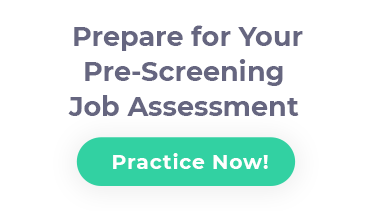EMT Tests: EMR, EMT, AEMT, and Paramedic Online Preparation – 2025

What Is EMT?
Paramedics and EMTs are responsible for stabilizing and transporting patients suffering from medical emergencies. They have undergone specialized training to become qualified to provide emergency medical care. Police officers and Firefighters often take additional training to become certified as EMTs to provide medical care at the scene of an emergency.
Although the two terms are frequently used interchangeably, paramedics undergo more advanced training than EMTs. Paramedics are qualified to perform more complicated procedures. There are actually 4 categories of emergency medical service providers:
- Emergency Medical Responder (EMR) – Can provide a basic level of care, and assist EMTs and paramedics.
- Emergency Medical Technician (EMT) – Can perform procedures like defibrillation, insert IVs and administer some medications.
- Advanced Emergency Medical Technician (AEMT) – Can perform more advanced procedures and a wider range of pharmacological treatments.
- Paramedic – Can intubate, perform heart monitoring, and can identify and treat critical medical conditions.
No matter how far you go as an emergency medical service provider, you must pass a licensing or certification examination. Before you can begin working in emergency medical service you need to prove that you have the knowledge to provide emergency care.
Paramedic and EMT Tests
The testing process to officially become a Paramedic or EMT is rigorous. Not only do you have to become certified in your state by passing your courses there is also a national test you must pass. Educational standards for emergency medical service providers are set by the National Registry of Emergency Medical Technicians; or NREMT. You will be tested on your general knowledge and your psychomotor function.
EMS Knowledge Tests
EMS tests are the tests necessary for gaining certification or licensure. The tests are proctored and given at specialized testing centers provided by Pearson VUE. EMS tests are adaptive. Each question is multiple-choice, and as you work your way through the test they will increase in difficulty.
The EMR test has between 80 and 110 questions, the EMT exam has between 70-120, the AEMT has 135 questions, and the Paramedic test has between 80-150. You can not skip a question and return to it, you must answer every question to proceed through the test.
The test ends once you have answered enough questions for the computer to determine your proficiency. If you do not pass you will be provided with a summary of your performance so you know your strengths and weaknesses for your next try.
No matter which level of emergency service you are testing for, the exam focuses on 5 key areas. The questions also differentiate between pediatric and adult treatment.
- Airway, respiration, and ventilation
- Cardiology and resuscitation
- Trauma
- Obstetrics and Gynecology
- EMS Operations
EMS Psychomotor Exams
The psychomotor shows how well you can perform the functions of a Paramedic or EMT. This is essentially a simulation of the standard duties of a Paramedic or EMT, and you will be observed and rated on your ability. There are 6 standard areas you will be tested on. To keep you on your toes, there will also be a random area chosen from a group of 4 possibilities.
The 6 standard areas
- Patient assessment- Trauma
- Patient assessment- Medical
- Cardiac arrest management
- Supine Spinal Immobilization
- Oxygen administration with a non-rebreather mask
- Bag Valve Mask (BVM) of apneic (not breathing) patient
The 4 random categories
- Bleeding control and shock management
- Long bone immobilization
- Joint immobilization
- Seated spinal immobilization
How to Prepare for the EMS Tests?
When it comes to licensing exams, you need to be on your game, and ready to do your best. If you are preparing for your EMS exams you should have access to everything you need to ensure an outstanding score. Use your notes and study guides to help you recall the areas you will be tested on. Your instructors will often provide practice tests, use these to see which area you are weakest in, so you know which areas you need to focus on the most.
When it comes to the psychomotor testing, take every opportunity to observe and learn the practical skills you need. You can also practice skills such as assessment on your own. You can also watch videos provided by the NREMT until you are comfortable that you know what you need to do, and can perform it confidently.

